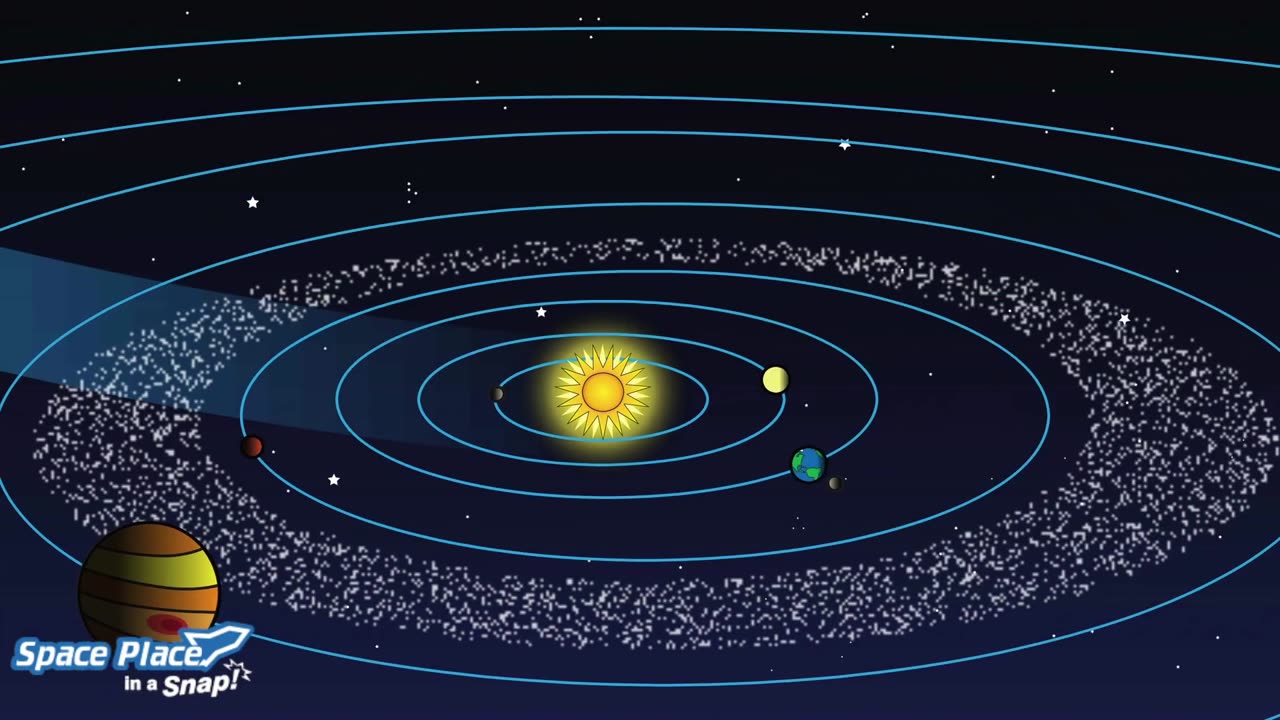Premium Only Content

Formation of Solar System
This video from NASA talks about how our solar system formed and how it came to be the busy place it is today.
The solar system, a bustling celestial neighborhood, came into existence around 4.6 billion years ago within a vast cloud of stellar dust, known as a nebula. This cloud's gravitational collapse, possibly triggered by the shockwave from a nearby star's explosion, led to the formation of a disk of material. As pressure and heat intensified, hydrogen fused into helium, giving birth to the Sun. Despite the Sun's dominance, some material persisted. Through gravity's influence, remnants coalesced, resulting in collisions that gave rise to increasingly larger celestial objects. Those that reached sufficient size became planets and dwarf planets, with rocky planets forming nearer to the Sun and gas and ice giants emerging farther out. The remnants of this process persist in the asteroid belt, home to unformed planetary fragments, and in the distant comets that have changed little since the solar system's inception. The study of asteroids and comets aids in the reconstruction of this cosmic history.
-
 1:12:55
1:12:55
Kim Iversen
5 hours agoThe New CDC Director Is Straight Out of a DARPA Lab — And That Should Terrify You
84.4K131 -
 1:35:50
1:35:50
Redacted News
4 hours agoZelensky reveals TOTAL DESTRUCTION plan for Ukraine in new interview, Iran prepares for US strikes
113K109 -
 1:25:33
1:25:33
vivafrei
11 hours agoLive from D.C.! Jasmine Crockett is TRASH! And Whatever Else Happens Today! Viva Frei LIVE!
118K66 -
 2:52:21
2:52:21
Tate Speech by Andrew Tate
8 days agoEMERGENCY MEETING EPISODE 106 - AMERICA, FUCK YEAH
191K72 -
 57:42
57:42
Candace Show Podcast
5 hours agoTRULY SICK: Ryan Reynolds Forced His 7-Year-Old Daughter To Say WHAT?! | Candace Ep 165
88.4K150 -
 33:04
33:04
Bare Knuckle Fighting Championship
2 days agoBKFC 70 HOLLYWOOD PALOMINO vs DAVIS ON DAZN WEIGH IN
14.6K1 -
 1:27:04
1:27:04
Right Side Broadcasting Network
4 hours agoLIVE: President Trump Delivers Remarks on Auto Tariffs - 3/26/25
56.8K11 -
 2:15:26
2:15:26
The Quartering
7 hours agoHuge New Epstein Trove Including VIDEOS, Full Signal "War Plan" Released, "Hot Wheels Controversy!
220K301 -
 5:08:44
5:08:44
Dr Disrespect
8 hours ago🔴LIVE - DR DISRESPECT - LAST DAYS OF WARZONE 2.0
96.7K14 -
 59:30
59:30
In The Litter Box w/ Jewels & Catturd
1 day agoOnly Citizens Can Vote! | In the Litter Box w/ Jewels & Catturd – Ep. 770 – 3/26/2025
78K55